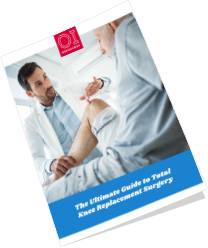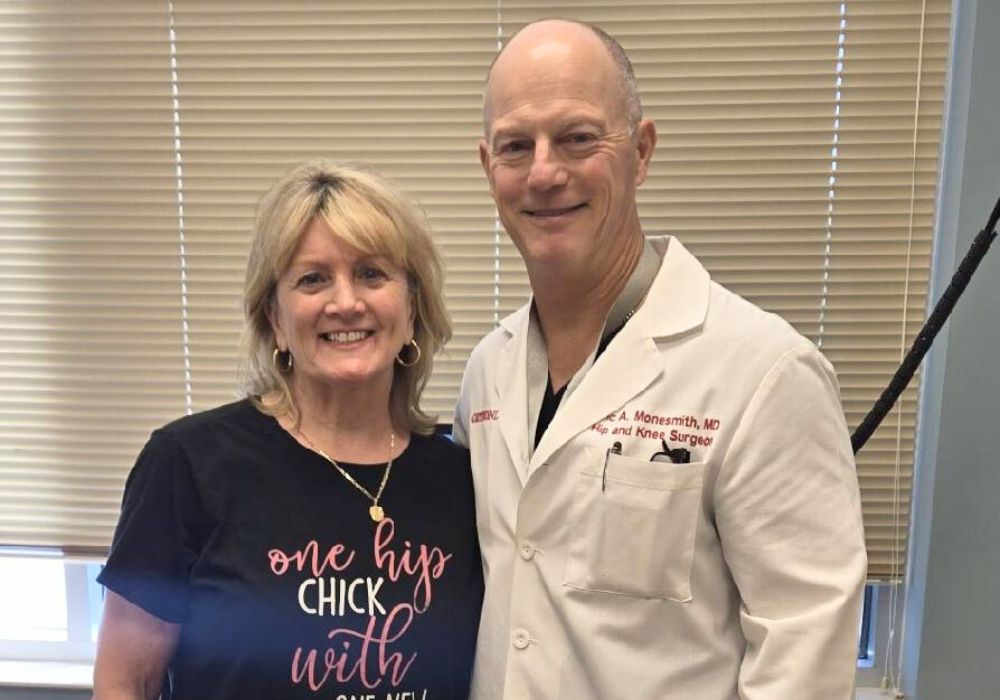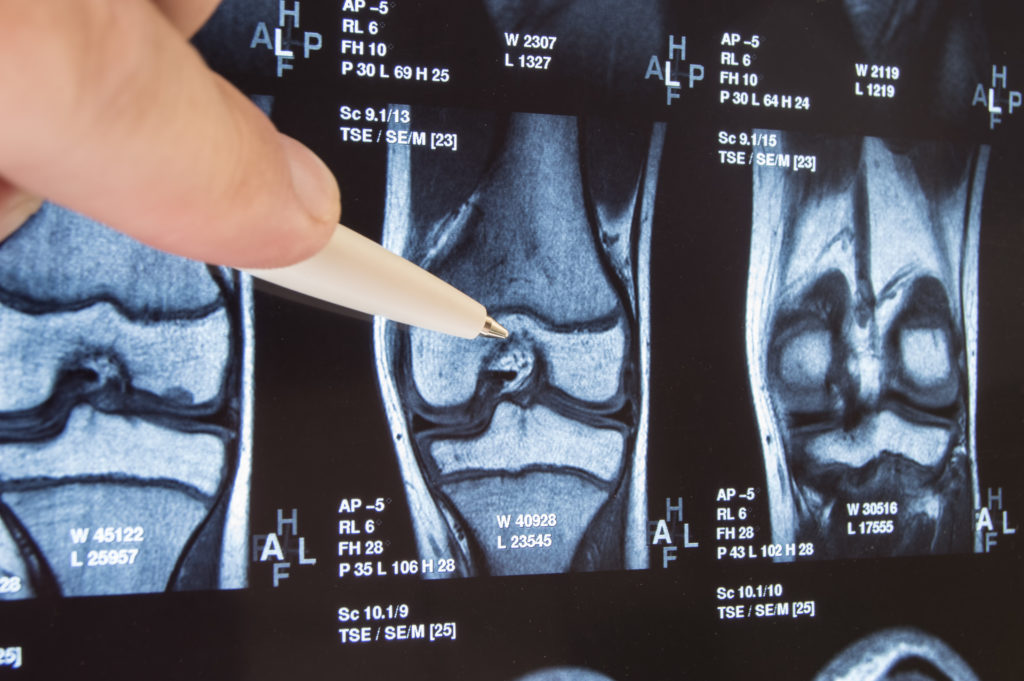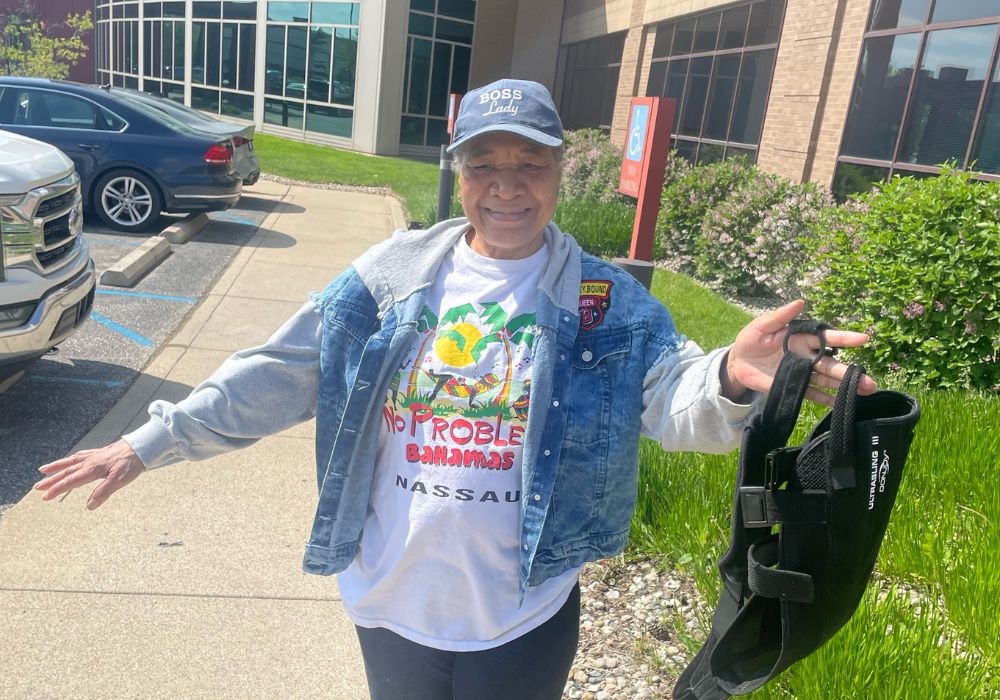This post is part of The Ultimate Guide to Total Knee Replacement
Full and partial knee replacement recovery and rehabilitation is just as important as the surgery itself. If you fail to follow recovery protocols, you may compromise your ultimate result of the surgery.
Read on to learn what to expect about surgery and how to optimize your knee replacement recovery.
The first day after surgery
Knee replacement recovery begins right after surgery. Typically, the day of knee replacement surgery, a physical therapist will ask you to stand up and take a few steps with a cane or walker.
If you walk or stand on your new knee quickly after surgery, you are more likely to recover faster and have less complications compared to those patients who do not stand up right away.
“Most of my patients are up and taking a few steps four hours after surgery,” says Dr. Frank Kolisek, a total joint specialist at OrthoIndy. “Muscle sparing surgical approaches, periarticular pain medicine injections, advanced anesthetic techniques and short operating times of around 40 minutes, allow my patients to do this.”
Your pain will be continually monitored and controlled with various pain-relief methods to make sure you are comfortable during your hospital stay. Most patients will be discharged when they have their pain under control and they are able to get in and out of bed and walk short distances.
Knee replacement recovery
Most partial and total knee replacement patients are able to go directly home within one to two days after surgery to begin knee replacement recovery.
Some patients may be discharged to a rehabilitation facility if they cannot safely return home. Our physical and occupational therapists help the medical and surgical team make this decision.
“Most of my patients are safe to go home the day after surgery,” says Dr. Kolisek. “My patients tell me the first two weeks after surgery are very hard, and then life starts getting better. Many are back to doing what they want after six weeks and their knees continue to improve for six- to twelve-months as they continue to do their home exercise program.”
A majority of patients resume most activities by six-weeks after surgery. If you had both of your knees replaced at the same time your hospital stay, your knee replacement recovery may take longer.
During your full or partial knee replacement recovery period at home, you will need to continue doing your knee range of motion and strengthening exercises and monitor your pain.
Some patients will need to take pain medicine four times daily, especially before physical therapy. Every patient’s needs are different, but most patients require a fair amount of pain medicine for the first month after surgery in order for them to get the range of motion required for good results.
At some point in your knee replacement recovery you will be able to stop taking your pain medication and return to your normal lifestyle.
When can I resume driving?
If you have your non-driving leg operated on, you can expect to return to driving when you are off pain medication and can get in and out of the car without assistance.
If you have your driving leg operated on, you may drive again as soon as you feel safe, which is usually three-weeks after surgery. Also, you must no longer be on pain medication and have regained strength in your driving leg.
When can I go back to work?
How soon you can return from knee replacement recovery depends on the type of work you do. If you work at a sedentary job, you may be able to return to work four to six weeks after surgery.
If your job requires frequent lifting and standing or bending, you may return to work after six to eight weeks.
If you work at a more labor-intensive job, your total joint specialist will work with you on a customized estimate of when you might be able to go back. In some cases, the time frame might be up to three months.
Returning to an active lifestyle
Sometimes, patients are actually more active after their knee replacement surgery because they are finally able to move around without pain. After knee replacement recovery it’s safe to return to activities like swimming, cycling, slow-paced tennis, hiking and golfing—and, we greatly encourage it once your physical therapy is completed.
We do not recommend jogging, basketball, football and other high impact activities as they put pressure on your new knees. Talk with your total joint specialist about your athletic goals before knee replacement surgery.
See exercises to do when recovering from joint replacement surgery
A better quality of life
Full and partial knee replacement recovery can be painful at first, but after returning home and completing physical therapy, you will find yourself adjusting to your new knee and enjoying a more mobile lifestyle.
“Most patients are eventually very happy after knee replacement surgery—whether it is a partial or a full replacement—because they can resume doing activities important to them that they couldn’t do before surgery,” says Dr. Kolisek.
“It truly is a team approach because the patient has to do their exercises in order to obtain functional range of motion and the strength to perform those activities that are important to them. If I do my job and they do their job, then we will both be happy and have a great knee replacement recovery.”
Learn more about joint replacement surgery at OrthoIndy
Schedule an appointment
Your well-being is important to us. If you have knee pain and are considering knee replacement surgery, schedule an appointment with one of our orthopedic specialists to review your options.
If your injury or condition is recent, you can walk right into one of our OrthoIndy Urgent Care locations for immediate care. For rehabilitation and physical therapy, no referral is needed to see one of our physical therapists.

The Ultimate Guide to Knee Pain Relief
Take control of your knee pain, learn about treatment options, and find out if surgery might be able to help you get back to normal.





